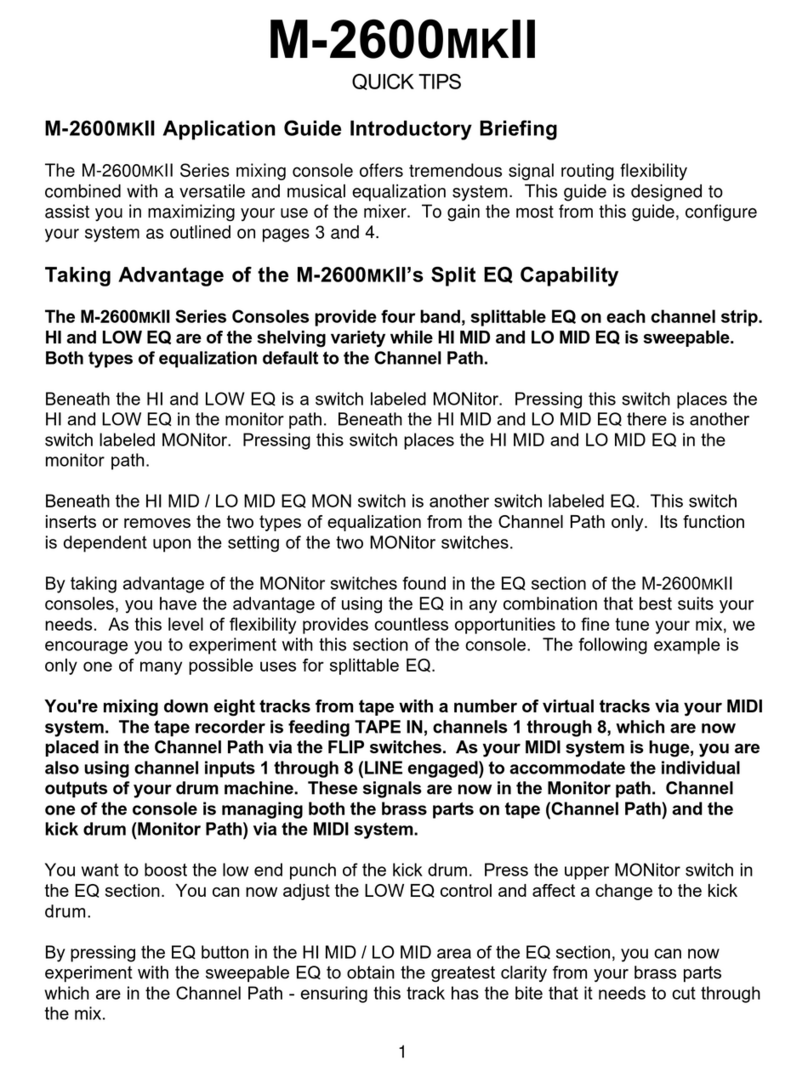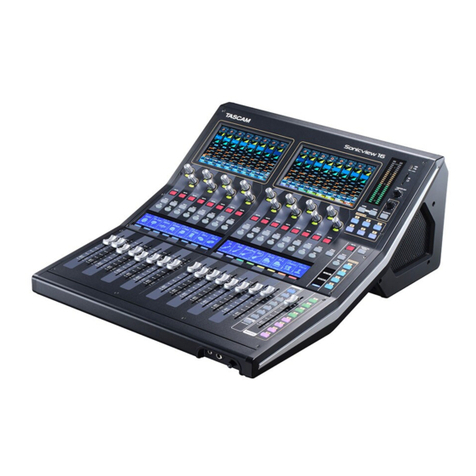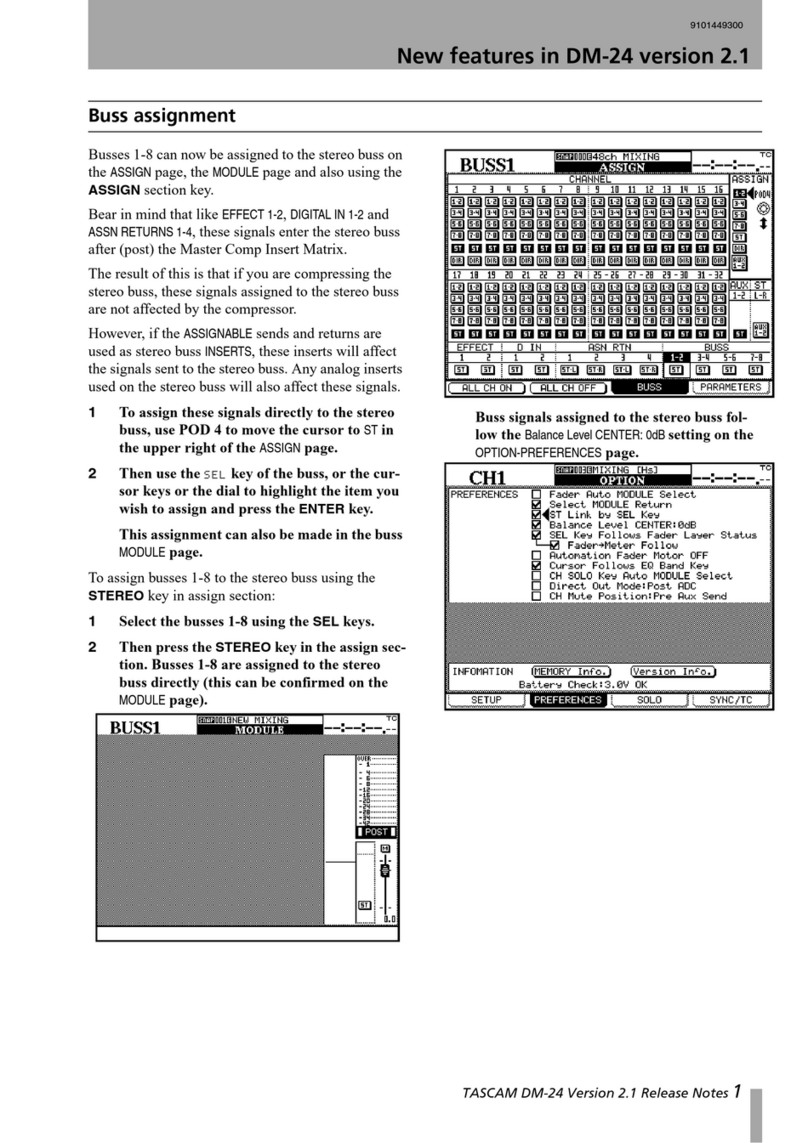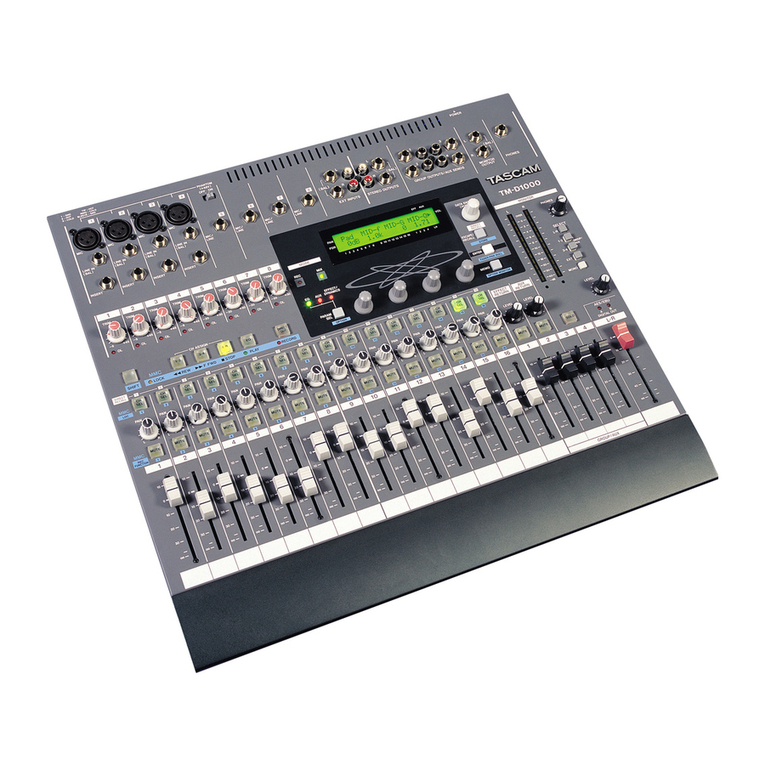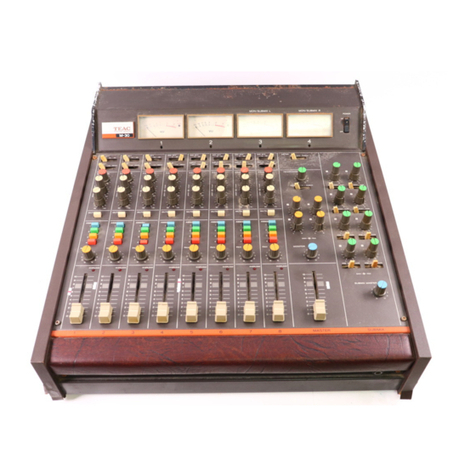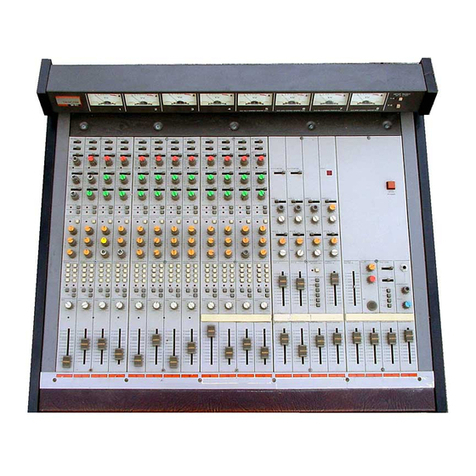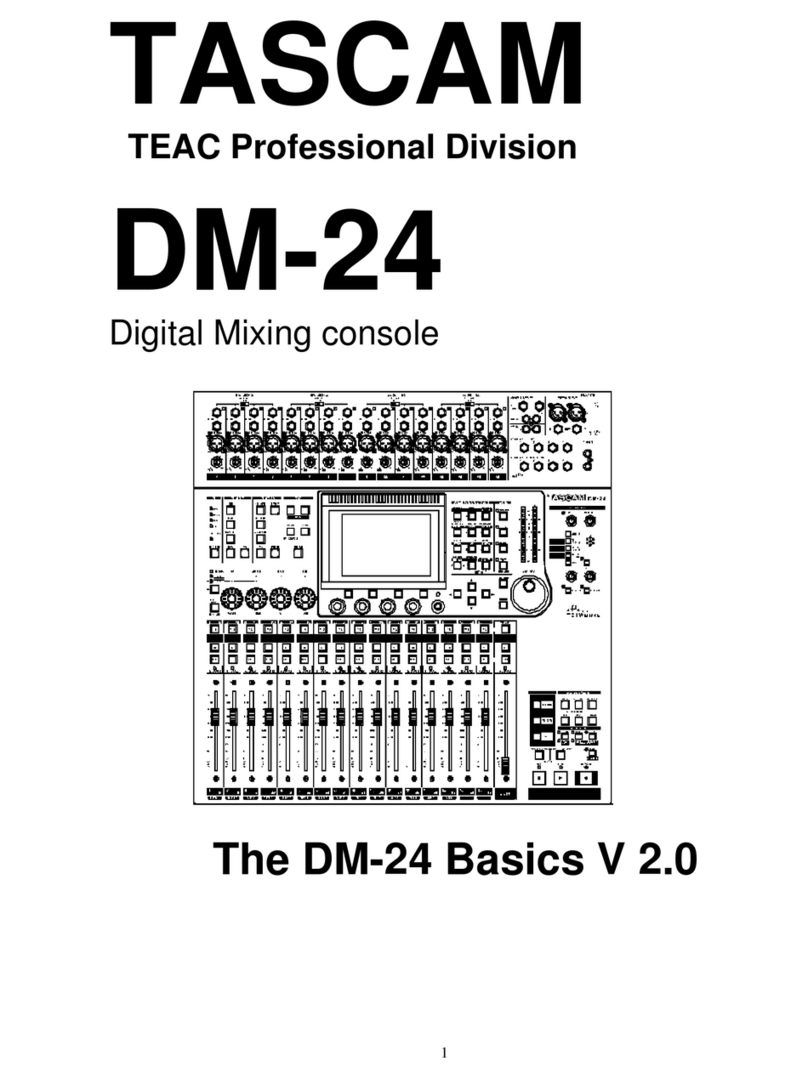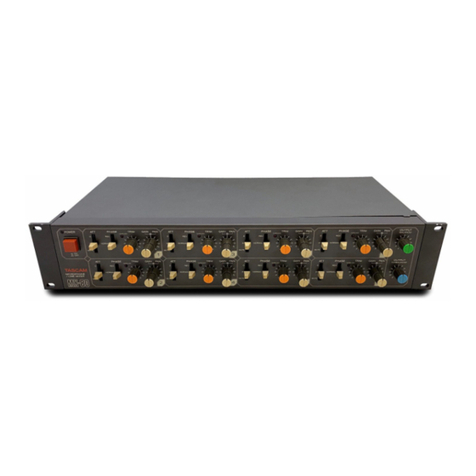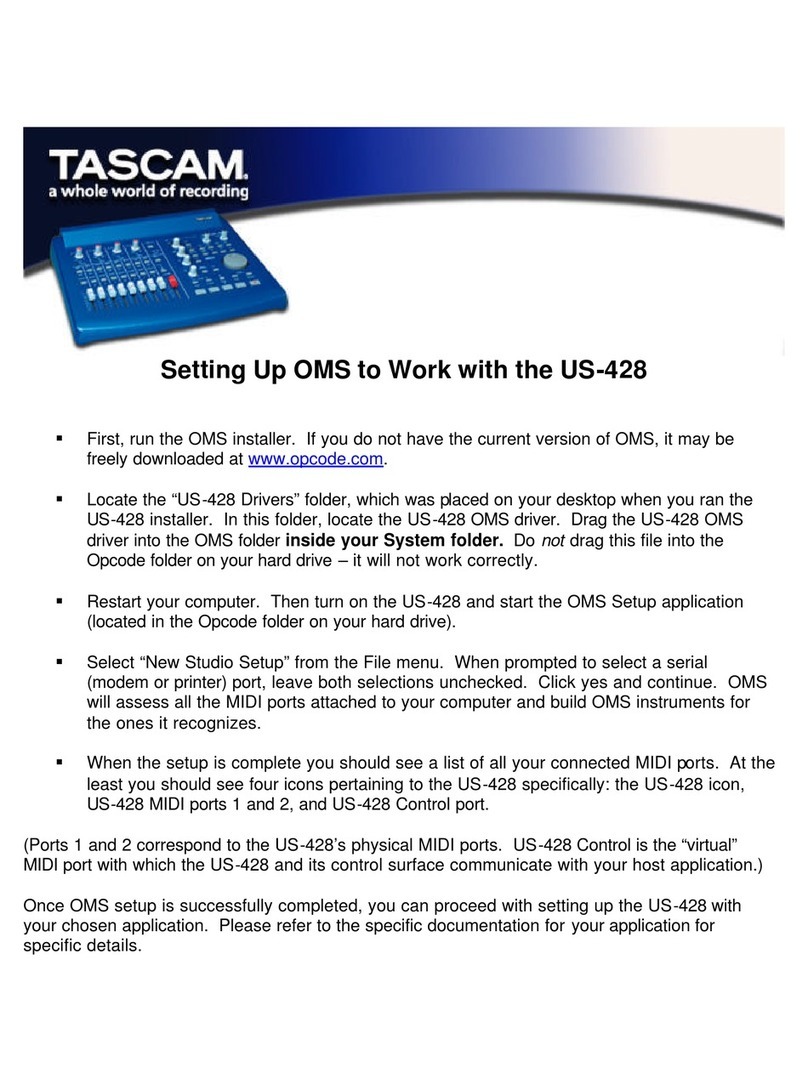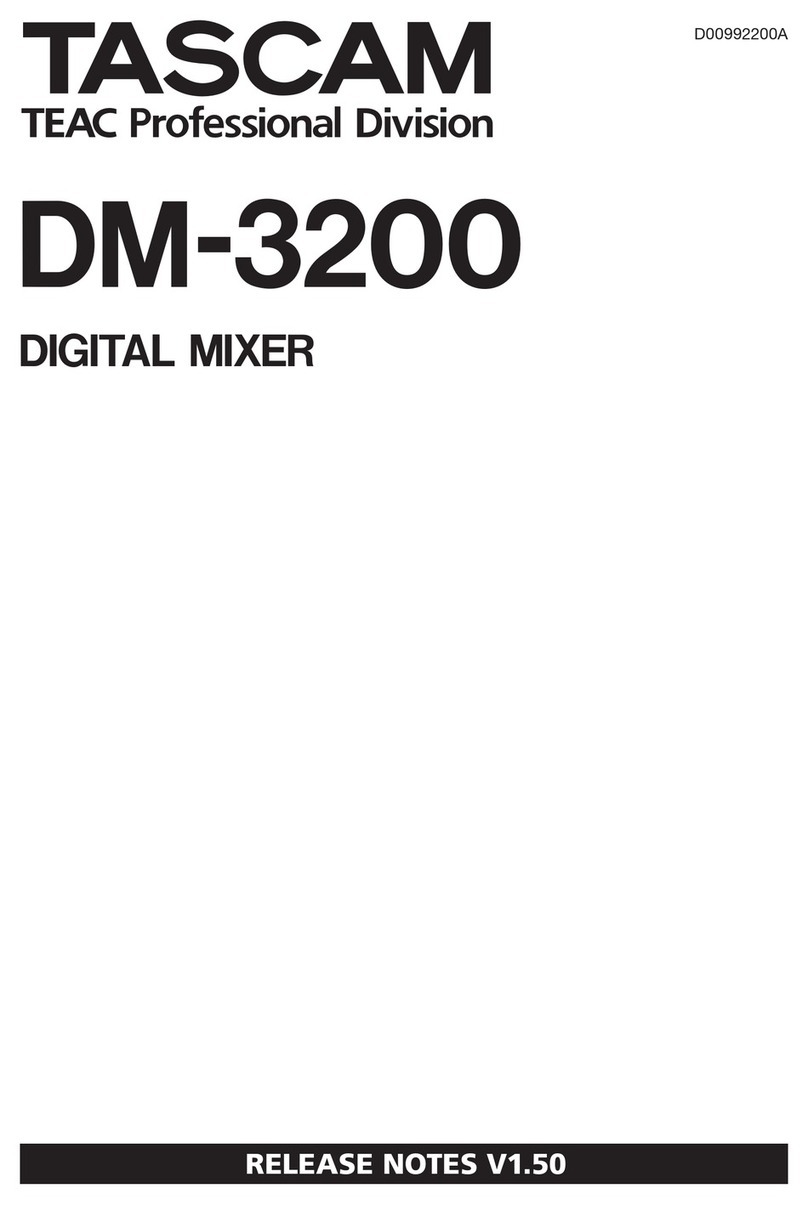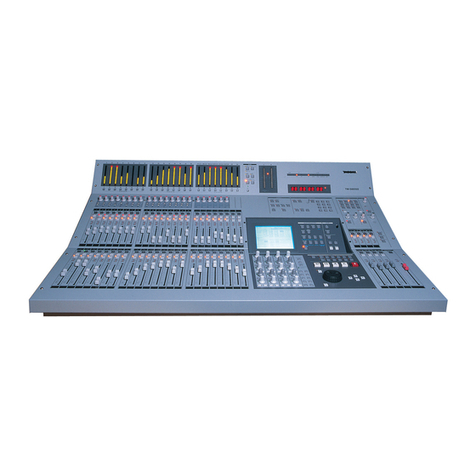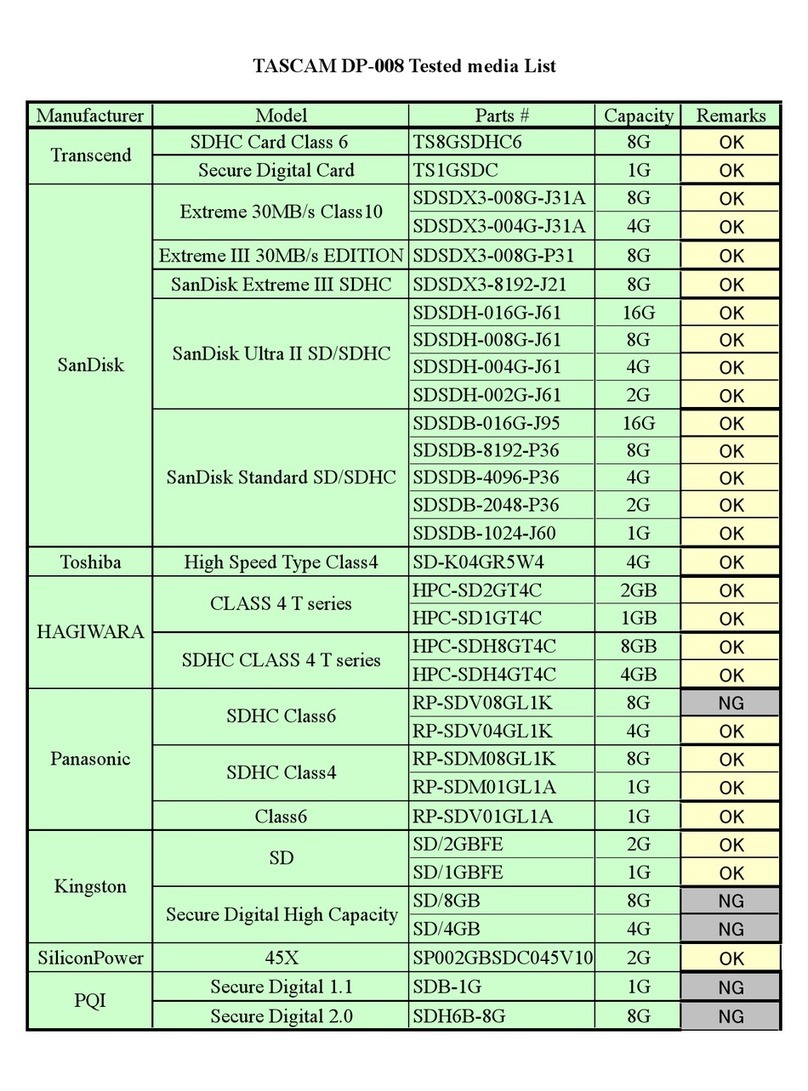RECORDING
Our recording application example will use
a
TASCAM model 234 Syncaset,
a
four track re-
corder, and your M-208. Although eight track
recording using an M-208and TASCAM models
38, 48 or 58
is
possible, the M-216
is
better
suited to eight track work. Many of the tech-
niques used in the preceding Sound Reinforce-
ment example may also be used inthe recording
application. So we won't repeat the basics of
level setting.
We will have to connect the 234 Syncaset
so that
it
both receives signals for recordingand
sends signals back tothe M-208for overdubbing,
ping-ponging, remix, and playback. All con-
nections should be made with the power off in
al1 the units involved. Connect the LINE OUT-
puts 1
-
4 of the Syncaset to the TAPE IN-
puts
1
-
4 of the M-208. Connect PGM OUT-
puts of the IVI-208 to the LINE INputs of the
234. For the sake of clarity and reference, con-
nect number 1 connectors on the mixer to
number 1connectorson the Syncaset, and so on
through number4.
Once these connections have been made, you
will want to calibrate your system. Turn to the
Work Methods section of this manual, page 21
for the exact procedures.
Recordingthe Basic Tracks
One of the primary differences between the
sound reinforcement application and the re-
cording application
is
a
conceptual
as
well
as
practical one. In sound reinforcement, the ac-
tion takes place simultaneously
;
what you hear
is
what you get. The recording processtakes the
music beyond the limitations of time. In the
sense that
a
completed project sounds like
al1
the tracks were cut
at
the same time,
as
in sound
reinforcement. The multi-track recording pro-
cesses of tracking, overdubbing, bouncing, and
remix are used to make music that was recorded
on Monday and Wednesday sound like
it
was
recorded
at
the same time and place. One of
the many advantages of multi-track recording
is
that one musician can sound like many by
playing the various instruments and performing
the vocals one-at-a-time until the project
is
complete.
The first track to be recorded
is
the rhythm
or click track. Since our group has
a
drummer,
the drum tracks would be recorded first. The
drummer may not wish to play without accom-
paniment. If not, the keyboardist and bass
can play the track with the drummer while the
recorder
is
set
to record only the drummer's
performance. A click, or metronome track can
be recorded first, if the drum tracks are to be
recorded after other parts are layed down. The
click track helps the musicians, who will record
later, to play in the proper tempo so that the
musicwill fittogether properly.
A cue mix andlor control room monitor mix
must be available for the musician or musicians
recording subsequent tracks to hear and play
with previously recorded tracks. This mix can be
set up by using the FLB system and speakers
as
we did in the sound reinforcement applica-
tion, or
a
headphone amp and headphones.
Additional cue mixes are possible using the
CUE OUTputs of the Syncaset and
a
TASCAM
MH-406 HeadphoneAmplifier.
The Buss Assignment switches (1-2 and 3-4)
and PAN controls of your mixer will determine
the track destination of your music on the
Syncaset. If you connected them the way we
suggested, the Buss Assignment, PAN, and
track numbers should be consistent. Track 1
of the Syncaset will come from Buss Assign-
ment switch 1, Program Fader
l,
etc.
Overdubbing
For the sake of this example, let's assume that
you have recorded your first track, click
or
drums, onto track 3 of the 234 Syncaset. The
process of recording your subsequent tracks
is
called "Overdubbing."
l.
In order to hear your clickldrum track
while recording your next track, you will need
to press the TAPE switch located juct below
the FLB control in channel 3 of your mixer.
This brings the playback from the recorder back
intothe FLBICuesystem.
2.
Use the Buss Assignment switchesand PAIV
controls to determine the track destination of
your new material.
I
3. Press the Record FunctionSelect switch on
the recorder for the new track, let's say track 1.
Press PLAY and RECord and the recorder will
playback your click track (3) while recording
your new track (1
).
Consult the owner's manual
of your recorder for the specifics of its opera-
tion.
4. Record track 2 in the same manner. You
can continue to fill up al1 the tracks of your
recorder (fourISyncaset, eightlmodel 38) inthis
way, but another recording technique will
greatly expand your track capability. So record
track 2 and proceedto "ping-ponging."
